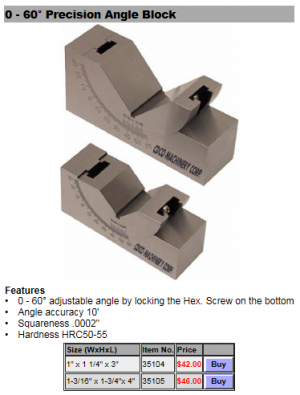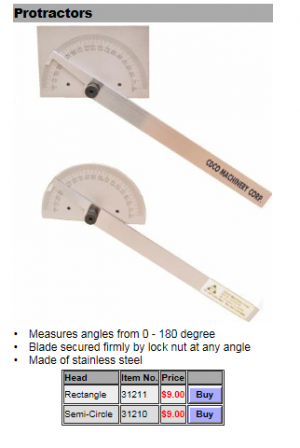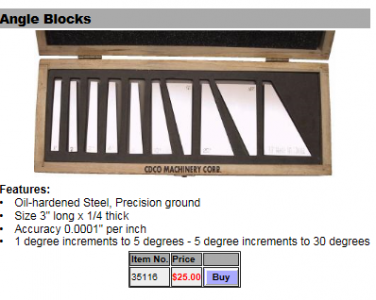- Joined
- Jul 20, 2014
- Messages
- 1,386
This is an operation on the mill that I have never attempted. I don't own a sine plate or tilting vise,
so what do I need to mill angles to create 15° and other cuts on steel, e.g. to make a Jacobs style wedge
or toe/edge clamps and similar tools. Can this be done safely and effectively on a tilting vise?
I would rather use a sine plate but the good quality plates are expensive. B&S or Suburban tool.
I may buy a good used plate, small. I see them on Ebay, but then you also need a set of gage blocks.
All this can easily become a $500 purchase. I see no other way to do this type of work accurately.
Thanks.
so what do I need to mill angles to create 15° and other cuts on steel, e.g. to make a Jacobs style wedge
or toe/edge clamps and similar tools. Can this be done safely and effectively on a tilting vise?
I would rather use a sine plate but the good quality plates are expensive. B&S or Suburban tool.
I may buy a good used plate, small. I see them on Ebay, but then you also need a set of gage blocks.
All this can easily become a $500 purchase. I see no other way to do this type of work accurately.
Thanks.



